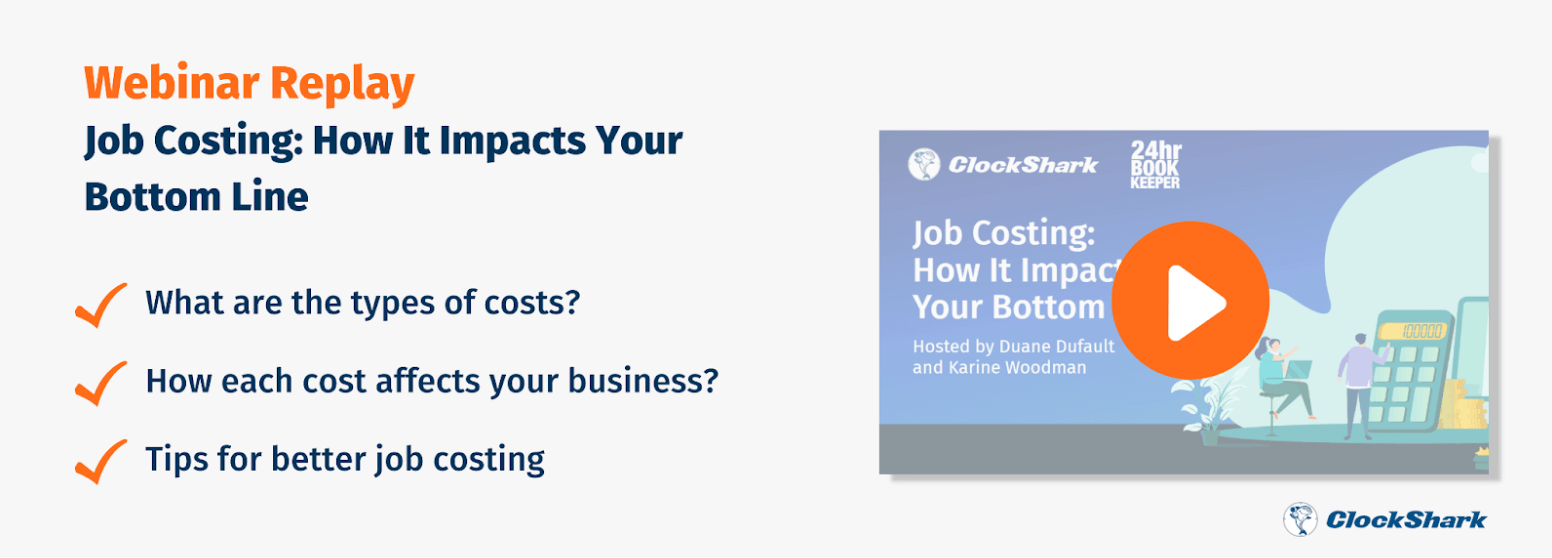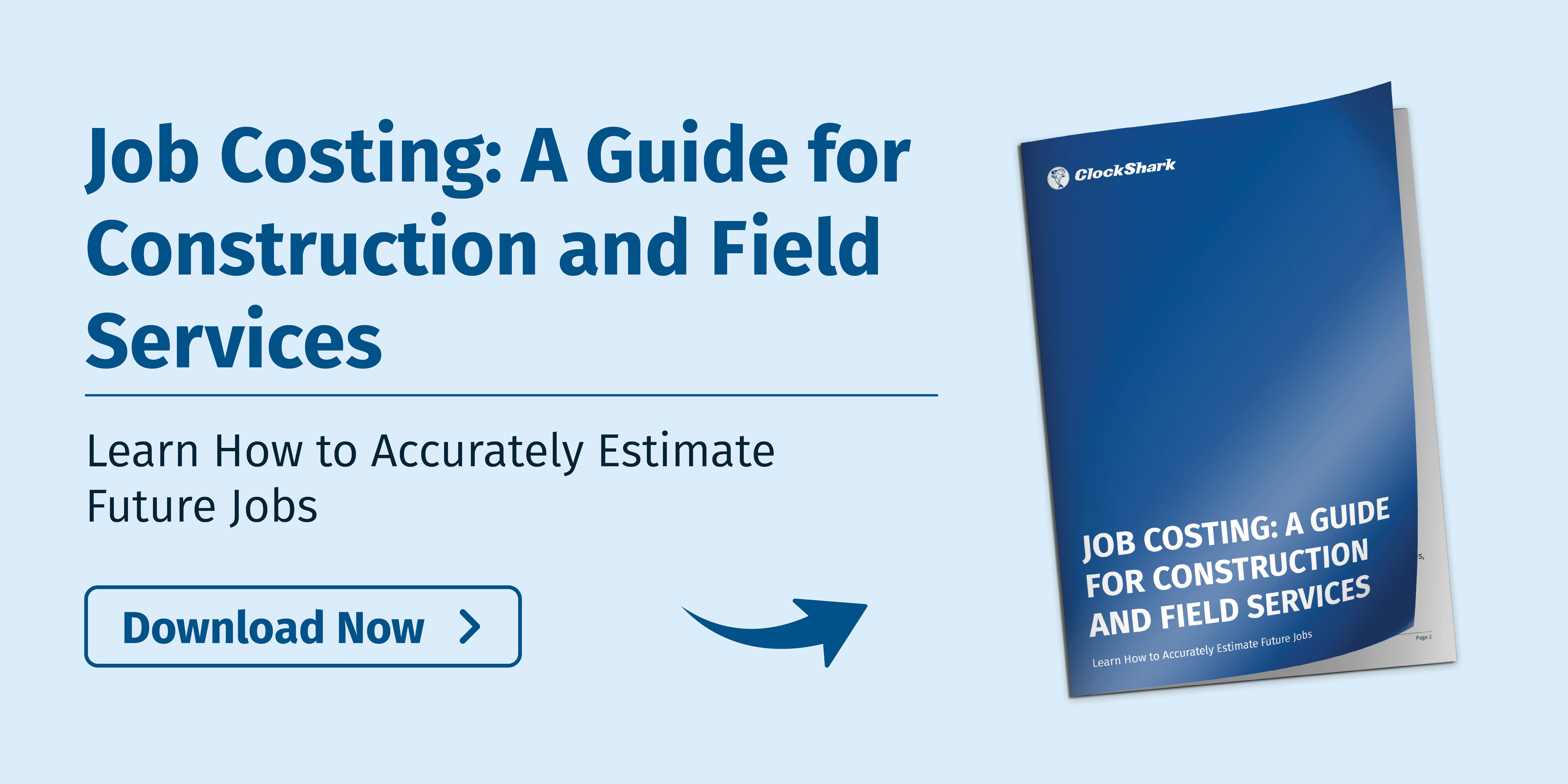Job costing can be done manually, although you may not get a completely accurate picture of your job costs if you’re not actively tracking materials, labor, and overhead. To calculate job costs:
Calculate Direct Material
Start by determining the cost of all materials used on the job, including. raw materials, equipment, etc. associated with your project.
Calculate Direct Labor
Direct labor costs all the costs associated with workers who will be working on the project. For example, laborers are direct workers in construction. Since you will likely have different rates for different workers, you have to calculate different pay rates for different types of workers. Include the costs for subcontractors, as well.
Determine Overhead
Overhead costs include indirect costs associated with the project. You should include tools and cleaning supplies, for example, as indirect materials that are included in your overhead costs. Overhead costs can be challenging because it’s often difficult to get exact figures for these costs.
Add these figures up for each project or job, and you will have an estimate of your job costs.
Benefits of Job Costing Software
Job cost tracking is an essential part of any construction or trade business but, as with any accounting process, accuracy is crucial. When you’re doing your job costing manually, there are a lot of risks but there are multiple benefits to using software to get your job costing done right.
1. Accurate Job Costs
When using a job costing software, you can record your costs throughout the lifespan on the project, even when expenses and income fluctuate. You won’t have to guess what something might cost because you’ll have it all calculated automatically.
2. Eliminates Human Error
Human error happens, no matter how accurate you try to be. With job costing software, the risk of human error is mitigated so you can be sure your job costs are accurate.
3. Better Scheduling
When using job costing software, you can keep track of the hours worked by your crews and subs, making it easier to schedule different tasks or jobs for each employee.
4. Reports
With job costing software, you’re able to run reports that provide you with a clear picture of each cost on a project. These can also serve to provide transparency to your customers and stakeholders which helps strengthen your relationships with them, and improve trust.
5. Better Estimates
When bidding on a job, accurate job costing is essential. Job costing software allows you to review previous jobs so you can provide more accurate - and profitable - estimates in the future.


